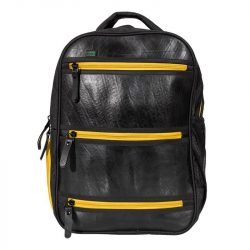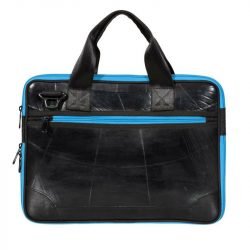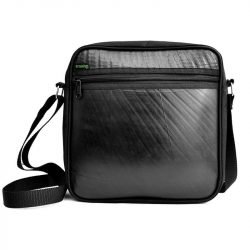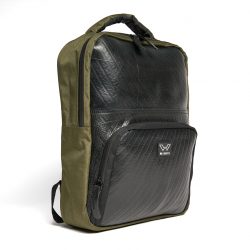Mankind is destroying natural resources: water, air, coal, natural gas and minerals. While these can be renewable, some in the short term like a plant of lettuce or long term such as trees. Others are finite resources, that’s the case for fuel.
To put it plainly: the problem is that we are consuming more natural resources than the time it takes the Earth to regenerate them. According to The World Counts, a study from World Wild Life shows that even though modern humans have existed for about 315,000 years, a third of Earth’s natural resources have been destroyed by humans in the last thirty years!

And here is why: Animals are deplorably bred and are over hunted. Forests that usually provide habitats for animals resulteert plants, store carbon, helping reduce global warming; are now being cleared, exposing land to wind and water damage.
Moreover, fertile soil is exhausted and lost to erosion because of poor farming practices such as monoculture. Fuel supplies are depleted. Water and air are polluted.
To sum up, according to Sensoneo, Humankind currently produces two billion tonnes of waste per year between 7.6 billion people.
The 7th resource
This way, recyclable materials become a very important resource. If they are properly processed, we can recover raw material so that the energy required is drastically less than obtaining them from primary sources. This is why the Global Recycling Foundation (GRF) calls these materials that can be recycled “the seventh resource”.

“Recycling is a key part of the circular economy, helping to protect our natural resources. Each year the ‘Seventh Resource’ (recyclables) saves over 700 million tonnes in CO2 emissions and this is projected to increase to 1 billion tons by 2030. There is no doubt recycling is on the front line in the war to save the future of our planet and humanity.”
Global Recycling Day Committee
In the Netherlands, 77% of all waste generated annually is recycled. This task includes collection, categorizing, processing and repurposing.
Het separate process requires a different waste stream for each type of material. Some of them, such as metals, are really expensive to produce, and easy to separate. By contrast, plastic is expensive to reuse. Just over half the plastic packaging used in the Netherlands in 2018 was recycled.
Overall, recycling helps to: combat climate change, boosts local employment around the world and conserves the earth’s six primary resources.
THE BENEFITS OF RECYCLING
According to the Ellen Mac Arthur Foundation, this are some of the most important impacts of recycling:
Environmental
- If fewer products are made→ this leads to reduction of emissions and pollutants from manufacturing.
- In the Netherlands alone, a circular approach could reduce CO2 emissions by 8%, reduce land use by 2180km², reduce water consumption by 700 million m³ and import 25% less raw materials
Business
- Energy consumption is optimized and waste is reduced→ This efficient production can save money.
- Recycling materials means a company does not have to purchase new resources and therefore avoids market price volatility and decreasing stocks.
Economic
- Resource savings of up to 70% compared to extracting raw materials
- A new labor-intensive job market in recycling and repair
- Reduction of ecological footprint
- In the Netherlands, a circular economy could make the government €7.3 billion and create 54,000 new jobs
Benefits per materials in numbers
According to a Stanford University analysis, these are the quantified benefits of recycling, by type of materiality:
| Aluminum | Saves 95% of the energy required to make the same amount of aluminum from its virgin source. One ton of recycled aluminum saves 14,000 kilowatt hours (Kwh) of energy, 40 barrels of oil. And 9 cubic meters of landfill space. |
| Newsprint | One ton of recycled newsprint saves 601 Kwh of energy, 1.7 barrels of oil, 27 kg of air pollutants from being released, 26,000 liters of water, and 4 cubic meters of landfill space. |
| Office Paper | Likewise, one ton of recycled office paper saves 4,100 Kwh of energy, 9 barrels of oil, 27 kg of air pollutants from being released, 26.000 liters of water, and 3 cubic meters of landfill space. |
| Plastic | One ton of recycled plastic saves 5,774 Kwh of energy, 16.3 barrels of oil and 27 cubic meters of landfill space. |
| Steel | In the same way, a ton of recycled steel saves 642 Kwh of energy, 1.8 barrels of oil and 3 cubic meters of landfill space. |
| Glass | One ton of recycled glass saves 42 Kwh of energy, 3.5 kg of air pollutants from being released, and 2 cubic meters of landfill space. Over 30% of the raw material used in glass production now comes from recycled glass. |
RECYCLING BRANDS
For us, it is important to get to know alternatives of companies that use recycled materials to make their products, in order to become smart and more conscious shoppers.
Therefore we make sure we avoid using new natural resources for the things we need.
Boavista Circular

80% of ocean pollution is plastic. However, a significant part of this number comes from the fishing industry.
A brazilian artist Nara Guichon create this sponge by from leftover fishing nets rescued from the ocean.
They are hand-sewn by a group of women from a poor community in the south of Brazil, generating income and supporting local work, both for these women and for the fishermen from whom Nara buys the nets. Social and environmental responsibility.
This sponge is very resistant as its material is supposed to persist in salty waters, it can last for about 3 years.
Read more about it Hier.
Unwaste

Of course, orange peels and coffee grounds are too good to throw away.
Unwaste gives them a new life in care products, such as soaps, hand and body wash, shampoo & conditioner bars, and more! In this way, all the local production of Unwaste favors the circular economy.
Consequently, all the local production of Unwaste favors the circular economy. Also, their products are 100% vegan.
Save the Wave

Save the wave is a project that takes action by building a sustainable brand. Since thet fight for a healthier planet by producing swimwear and activewear out of recycled materials.
They use ECONYL® yarn, the high-quality 100% regenerated fibre, made from nylon waste otherwise polluting the Earth, like fishing nets, fabric scraps, carpet flooring and industrial plastic, rescued from all over the world.
As well as being a solution to waste, ECONYL® regenerated nylon is also better when it comes to climate change. Because it reduces the global warming impact of nylon by up to 90% compared with the material from oil.
FOR EVERY 10,000 TONS OF ECONYL® RAW MATERIAL:
- Saves 70,000 barrels of crude oil
- Avoids 65,100 tonnes of CO2 eq. emissions
Ecowings

Ecowings make bags and accessories from used truck inner tubes in India. By removing discarded inner tubes from the waste stream and upcycling them into high-quality products.
In the Indore region, they provide employment to people of all classes for which they receive fair compensation, while they provide a comfortable, clean and safe working environment.
Ecowings products are trully durable, due to the use of robust zippers, very strong yarn and solid closures.
Every bag and accessory is unique!
Read more about sustainable living in our blog!
See you soon!
😀







